Having welcomed 44.4 million passengers in 2018¹, Sydney Airport is ranked Australia’s busiest. Like other major airports in the country, they were required by the new government mandate to upgrade all Hold Baggage Screening (HBS) systems to ECAC EDS Standard 3 approved Computed Tomography (CT). To do so, Sydney Airport had to overcome a major challenge—to install a CT scanner at one of their busiest baggage handling lines with minimal disruption to ‘live’ operations in the face of space constraints.
Following a successful trial of the Smiths Detection CT-based cabin bag screening system HI-SCAN 6040 CTiX at one of its checkpoints, Sydney Airport engaged our services again for an HBS solution. As their prime contractor, Smiths Detection was responsible for the implementation of the HBS CT solution from end to end, including the design and construction of the mezzanine platform. Keeping their requirements in mind, our team custom-built a mezzanine platform to install the ECAC EDS Standard 3.1 approved CT checked baggage scanner, HI-SCAN 10080 XCT. The successful implementation caused minimal disruption to existing operations and no operational downtime was recorded since it went ‘live’.
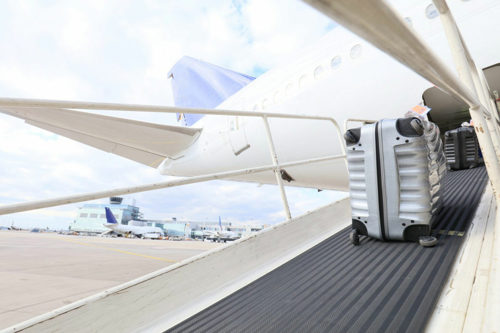
Confined floor space at the baggage handling facility is a common problem for airports and retrofitting an HBS system into existing airport designs is often challenging. Whilst it’s imperative to have a high-speed and reliable HBS scanner, airports must ensure that there is sufficient allocated space for the bag handlers and luggage carts to move around. More importantly, there must be ample space for the baggage handling system that’s responsible for transporting and sorting checked bags that are to be loaded onto planes.
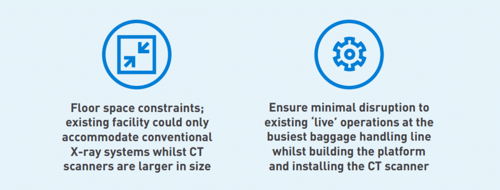
To add, the trial was to take place at the busiest baggage handling line within the airport. Working alongside the operation while replacing the existing machine is no easy feat. A bottleneck or disruption at any stage of the baggage screening and sorting process will significantly increase the risk of congestion, routing and sorting errors, and operational problems—with the potential to immobilise the entire airport operation within minutes.
To successfully implement the HI-SCAN 10080 XCT CT HBS scanner on a new mezzanine platform without compromising the existing operation, we worked closely with the Sydney airport team and underwent an extensive process in planning and executing this project.
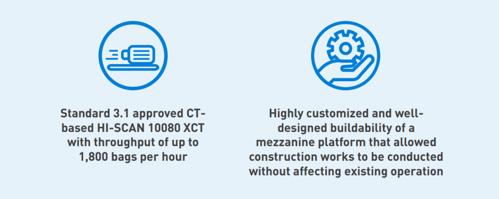
The existing platform resonance was measured and validated in simulations to help us better assess the buildability of the new platform. To ensure the CT scanner was installed without compromising existing operations, a lot of attention was put into the construction of the new custom-built platform. This includes several intricate manoeuvres and modifications to the baggage handling system (BHS), and existing cable and fire systems infrastructure. On top of this, we also worked on the fabrication and construction of the steel, managed the construction of the platform and the demolition and reinstatement works of the building.
After the new platform was constructed, we continued to repeatedly measure the resonance and simulation for every modification we made. These insights and results collected will help us provide future cost-effective solutions for our customers.
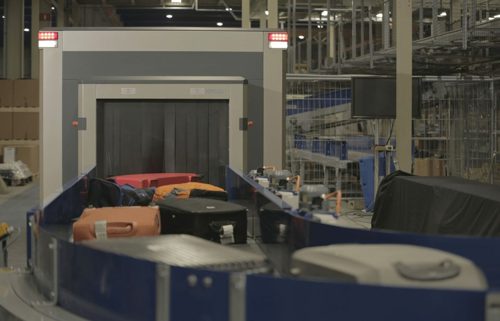
The installed HI-SCAN 10080 XCT is a Standard 3.1 approved hold baggage scanner which uses dual-view, dual-energy full 3D volumetric CT imaging and reconstruction. With high image quality and low false alarm rates, it provides a higher level of automatic threat detection. Image analysts can toggle between 2D and 3D images—whichever view that works best for them to carry out the inspection efficiently.
With the success of the trial, Sydney Airport now has insights behind the implementation of the CT-based HI-SCAN 10080 XCT—in spite of space constraints. Our deep expertise and experience as a leading security solution partner saw the successful implementation of the CT HBS, having caused minimal inconvenience to existing operation and facility. No operational downtime was recorded since the scanner went ‘live’. A significant increase in bags throughput and a higher rate of threat detection have also been observed.
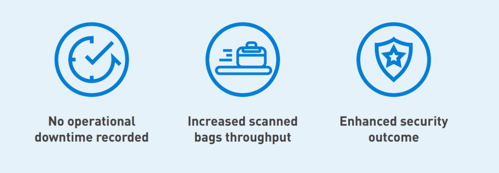
From the onset of the trial to the day the CT scanner went ‘live’, we worked closely with the airport at every stage to ensure that the installation and implementation process caused minimal disruption to the airport’s existing operations. The existing scanner was only taken offline for as long as it took to install the HI-SCAN 10080 XCT. From the structure design of the mezzanine platform down to its steel fabrication and construction, Smiths Detection is honoured to have been appointed as the prime contractor for this trial and has proven to be a trusted security partner.